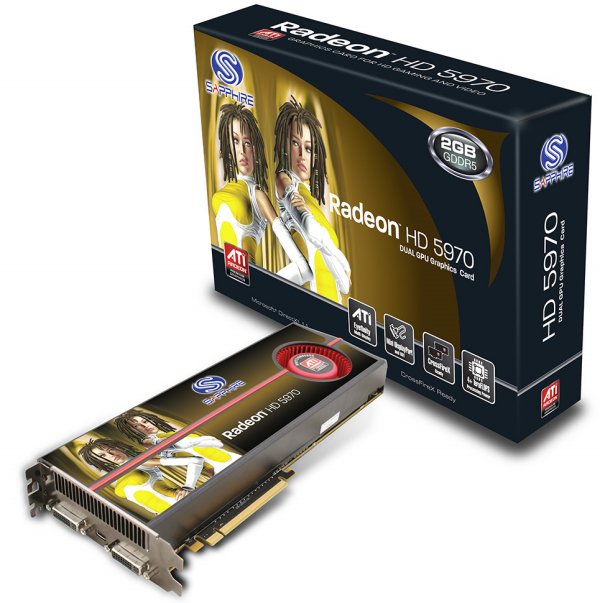
Posted on Wednesday, November 18 2009 @ 22:30 CET by Thomas De Maesschalck
Sapphire has introduced the Radeon HD 5970 and Radeon HD 5970 OC. The latter one is pretty disappointing though, a 10MHz increase on the cores to 735MHz and a 10MHz increase on the memory to 1010MHz (4040MHz effective) can barely be called an overclock. Both cards are available today and include BattleForge and a coupon for DiRT2.
With twice the computing power of the highly acclaimed SAPPHIRE HD 5870, the new HD 5970 model shares all the exciting features of this family – including support for the DirectCompute 11 instruction set of Microsoft DirectX 11, hardware tessellation and multi threaded communication with the system CPU. It also supports the acceleration of applications supported by ATI Stream, and the ability to display across three monitors simultaneously with ATI Eyefinity.
The SAPPHIRE HD 5970 OC Edition ships with enhanced clock speeds of 735MHz core and 1010MHz (4.04GHz effective) - faster than the standard model, making the SAPPHIRE HD 5970 OC the fastest card in its class, and the fastest in the world. Enthusiasts will also be able to tune performance of these SAPPHIRE cards using the SAPPHIRE Redline voltage tweaker tool to enable higher levels of overclocking.
With 2GB of fifth generation GDDR5 memory and a new architecture with a total of 3200 stream processors and 160 texture units the SAPPHIRE HD 5970 OC is lightning fast with existing DirectX10.1, DirectX 10 and DirectX 9.0 games and applications, and will support stunning new levels of detail, transparency and lighting effects in new releases of software using DirectX 11. All of this comes with a modest active power consumption and ATI Powerplay Dynamic Power Management to achieve super-low power consumption in 2D and idle modes.
These cards incorporate the latest architectural features from the ATI division of AMD in order to fully support Microsoft DirectX 11, including DirectCompute 11 instructions, hardware Tessellation and multi-threaded communications with the system CPU. These combine to provide new capabilities such as the interaction between transparent objects, new lighting and accelerated post processing effects as well as supporting ATI Stream for accelerating applications such as video transcoding.

